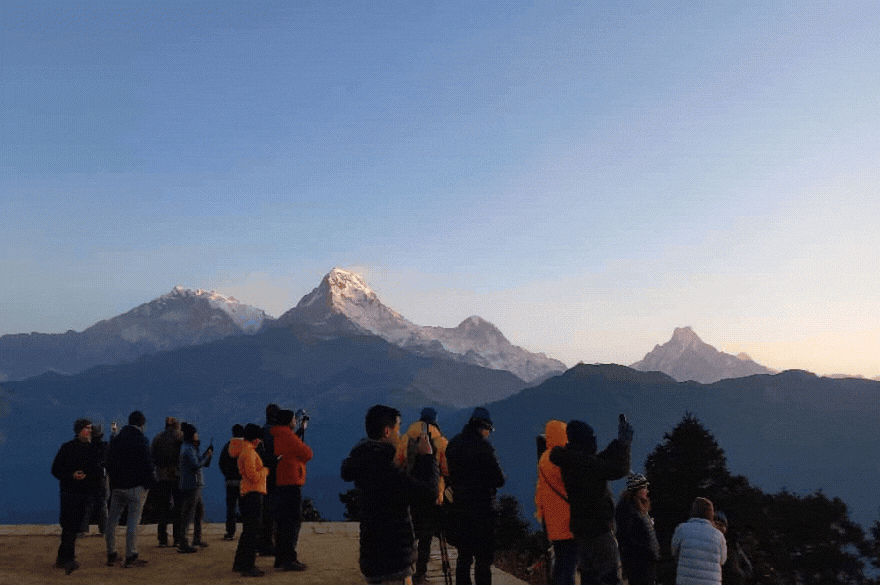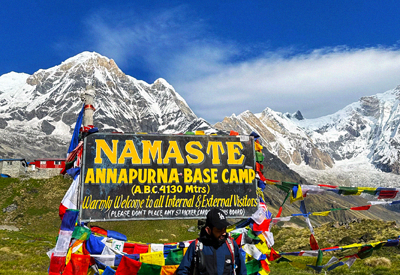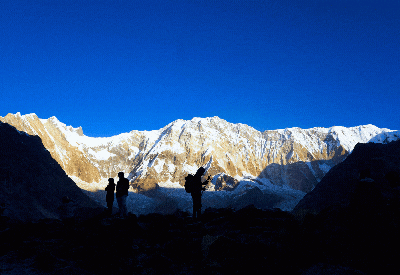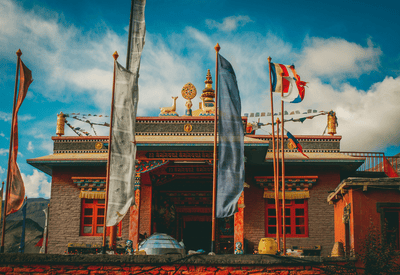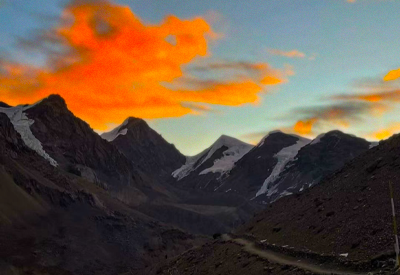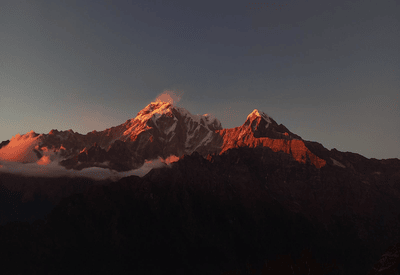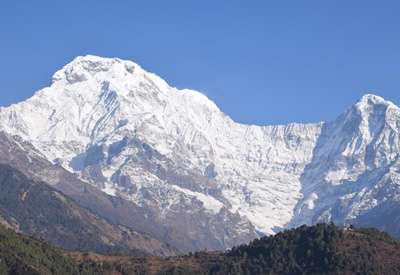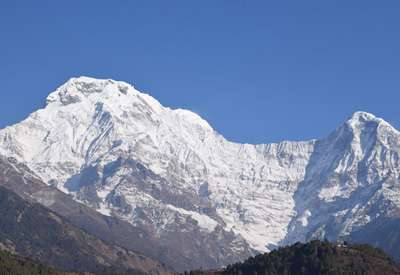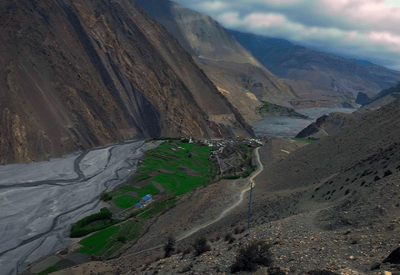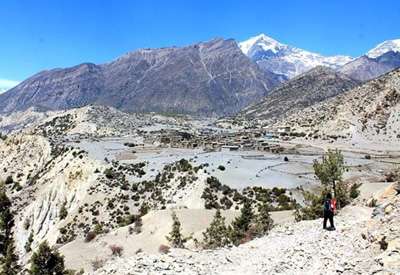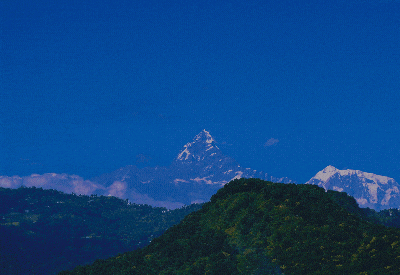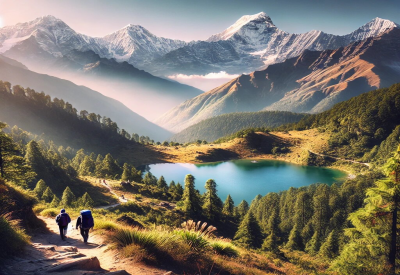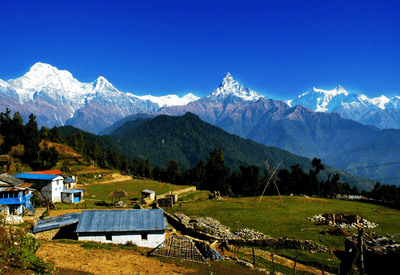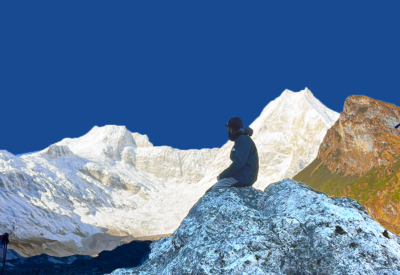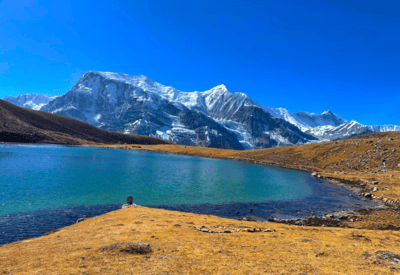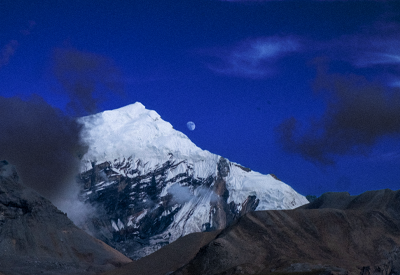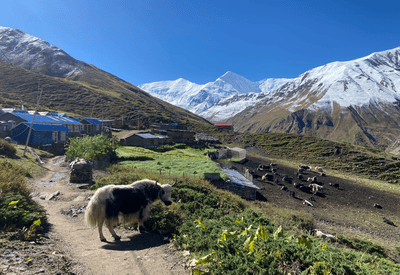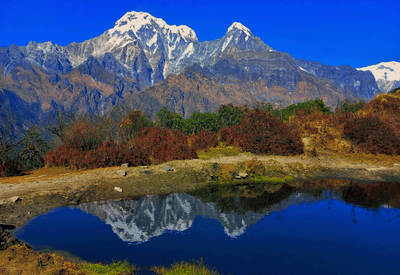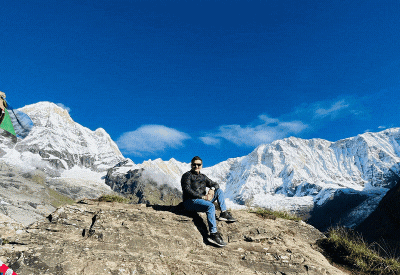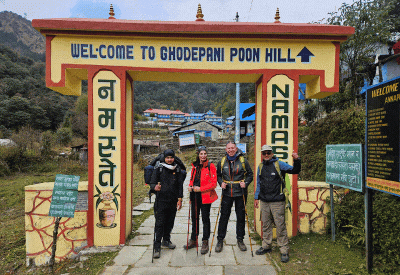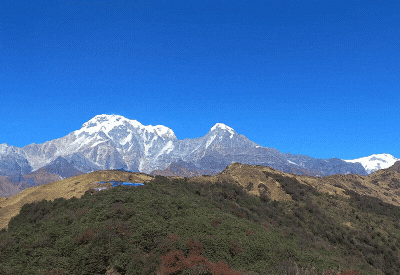Note: The Ghorepani Poon Hill Trek is one of the most accessible and rewarding trekking experiences in Nepal. While it is considered an easy-to-moderate trek, weather conditions in the Annapurna region can change quickly, so be prepared for unexpected situations.
The Ghorepani Poon Hill Trek is one of the most popular short trekking routes in Nepal, offering stunning views of the Annapurna and Dhaulagiri ranges. This trek is perfect for beginners and those looking for a relatively easy and rewarding hiking experience. It provides an excellent opportunity to explore Nepali culture, lush forests, and panoramic Himalayan landscapes, making it one of the best short Annapurna treks available.
Food & Accommodation on the Ghorepani Poon Hill Trek
The Ghorepani Poon Hill Trek offers trekkers a combination of comfortable teahouse accommodations and authentic, delicious meals along the journey, ensuring a fulfilling trekking experience. As you trek through the scenic landscapes and traditional villages, you'll stay in teahouse lodges, which are the primary form of accommodation on the route.
Teahouse Accommodation
Teahouse lodges provide simple yet cozy rooms, ideal for trekkers looking for rest after a day of hiking. The accommodations are basic, but they come with comfortable beds, warm blankets, and a peaceful atmosphere. The guesthouses offer a communal setting where trekkers can share stories and enjoy the camaraderie of fellow adventurers. The teahouses are strategically located in key spots like Ulleri, Ghorepani, Tadapani, and Ghandruk, providing safe, secure, and comfortable places to stay along the trekking route.
While facilities may be basic, most teahouses provide hot water (for showers, often at an additional charge), charging points (for electronics), and WiFi (available at some lodges, but may be slow). For those trekking at higher altitudes, teahouses offer much-needed warmth and shelter, especially during the chilly evenings.
Meals Along the Trek
The food offered at teahouses on the Ghorepani Poon Hill Trek reflects traditional Nepali cuisine, designed to fuel trekkers with energy for the day ahead. The meals are simple, yet nutritious and hearty, catering to both local and international tastes.
Dal Bhat – A staple meal in Nepal, Dal Bhat consists of lentil soup (dal) served with rice (bhat) and often accompanied by vegetables, pickles, and sometimes meat. This meal is highly nutritious and provides the energy needed for a day of trekking.
Momos – These traditional Nepali dumplings are filled with vegetables or meat and are perfect for a quick snack or lunch.
Noodles – Popular and easy to prepare, noodles are a common option for trekkers looking for a comforting and filling meal.
Pancakes – For breakfast or a quick snack, pancakes are a favorite choice. You can also enjoy them with honey, jam, or fruits.
Soups – With chilly weather, a warm soup is the perfect meal to start or end the day. Whether it's vegetable, chicken, or noodle soup, these dishes are both satisfying and comforting.
Hot Drinks
The teahouses along the trail offer a range of hot drinks to keep trekkers warm and refreshed. You can enjoy a hot cup of tea, coffee, or hot chocolate at every stop, providing a perfect break during your trek. These beverages are especially popular in the mornings and evenings, offering both hydration and warmth to combat the cold mountain air. Whether you prefer a strong cup of black tea or a soothing hot chocolate, the hot drinks will help rejuvenate you for the next leg of your journey.
Dietary Preferences
Teahouses are accustomed to catering to a wide range of dietary needs. Vegetarian and vegan options are widely available, and trekkers with specific dietary restrictions (gluten-free, dairy-free, etc.) can also find suitable meals with prior notice.
Overall, the food and accommodation along the Ghorepani Poon Hill Trek strike a balance between authenticity and comfort, ensuring trekkers have an enjoyable and fulfilling journey. The teahouses along the trail provide not only a place to rest but also a chance to experience Nepali hospitality and cuisine at its best. Whether you’re enjoying a hearty Dal Bhat after a long day’s trek or sipping tea with fellow travelers, the trekking experience is enriched by these cozy stops along the way.
Best Season for Poon Hill Trek
The Poon Hill Trek is a year-round adventure, but the experience varies depending on the season. The best time to embark on the trek is typically during Spring and Autumn, though each season offers its unique appeal. Below is an overview of the seasons and what you can expect during each:
Spring (March - May)
Spring is considered one of the best times to trek Poon Hill, offering the perfect combination of clear skies and beautiful natural landscapes. During this season, the rhododendron forests along the trekking route are in full bloom, creating a vibrant and colorful atmosphere. The temperatures are moderate, and the weather is generally stable, providing excellent conditions for trekking. The mountain views are stunning, and trekkers can enjoy clear visibility of the Annapurna and Dhaulagiri ranges.
Highlight: Vibrant rhododendron blooms and clear skies
Best for: Those looking for a scenic trek with lush landscapes and good weather
Autumn (September - November)
Autumn is another ideal season for the Ghorepani Poon Hill Trek. It is widely regarded as the best time for trekkers due to the stable weather and clear mountain views. The skies are typically clear, providing breathtaking views of the Himalayas. The temperature is comfortable, and there is little chance of rain, making the trails dry and easy to navigate. This season attracts many trekkers due to its perfect conditions for trekking.
Highlight: Clear mountain views and stable weather
Best for: Trekkers seeking the best overall trekking conditions with great visibility
Difficulty Level of the Poon Hill Trek
The Ghorepani Poon Hill Trek is considered an easy to moderate trek, making it an excellent choice for beginners and those looking for a shorter Himalayan adventure. While the trek is accessible, it still provides a good challenge and a rewarding experience.
Trail Conditions
The trek features a variety of terrain, including gentle ascents, dense forests, and mountain paths. The majority of the route is well-marked and maintained, making navigation straightforward. However, there are a few sections that can be challenging, especially the Ulleri staircase, which is a steep stone staircase that requires some physical effort to climb. Although it may feel taxing, it is manageable for most trekkers and adds to the sense of accomplishment.
Fitness Requirements
No prior trekking experience is required to complete the Ghorepani Poon Hill Trek, but basic fitness is recommended. The trek's moderate difficulty means you'll need to be in decent physical shape to tackle the daily ascents and descents, particularly on the second and third days of the trek. It's also important to be prepared for high-altitude conditions, but since the maximum elevation is 3,210 meters (Poon Hill), the risk of altitude sickness is minimal for most trekkers.
Why It's Great for Beginners
The relatively short duration (3 days) and well-maintained trails make this trek a perfect option for trekkers looking to experience the Himalayas without undertaking a more strenuous journey. With steady progress, ample rest stops, and support from local teahouses, this trek offers the ideal introduction to the wonders of Nepalese trekking.
Summary of Difficulty
Difficulty Level: Easy to moderate
Key Challenge: Steep ascents, particularly the Ulleri staircase
Fitness Requirement: Basic fitness, no prior trekking experience needed
Max Altitude: 3,210 meters (Poon Hill)
Overall, the Poon Hill Trek provides a perfect combination of adventure and accessibility, offering a manageable challenge for beginners while still delivering the spectacular views and cultural experiences that make trekking in Nepal so memorable.
Packing List & Essential Gear for the Poon Hill Trek
When preparing for the Ghorepani Poon Hill Trek, it’s important to pack wisely to ensure comfort and safety. Clothing is essential for varying mountain conditions. You'll need warm layers for chilly evenings and mornings, along with a windproof and waterproof jacket to protect against the unpredictable weather. Thermal wear is a must for colder nights, especially at higher altitudes like Ghorepani and Poon Hill.
Footwear
For footwear, a pair of sturdy trekking boots is crucial to provide support during steep ascents and descents, especially on the Ulleri staircase. Be sure to pack extra pairs of moisture-wicking socks to keep your feet dry and prevent blisters.
Gear
In terms of gear, don’t forget your trekking poles. They will help with balance and reduce strain on your knees during the trek, particularly when descending. A sleeping bag rated for cold temperatures (around -10°C or 14°F) is essential, as the nights can get quite cold, and teahouses often don’t provide bedding. A backpack (30-40L) is needed to carry your essentials such as water, snacks, and extra clothing. Choose a lightweight, comfortable one with padded straps. You’ll also need a headlamp for early morning hikes to catch the Poon Hill sunrise and for navigating around the teahouses at night.
Accessories
For accessories, bring sunglasses to protect your eyes from the strong sun at high altitudes. High-SPF sunscreen is also necessary to prevent sunburn. A reusable water bottle will help you stay hydrated throughout the trek, as teahouses along the route offer refills. Pack some energy snacks like granola bars, chocolate, or nuts to keep you energized during long trekking days.
Document
In terms of documents, carry your passport, as it is required for permits and identification purposes. You will need an Annapurna Conservation Area Permit (ACAP) and TIMS card, which are essential for trekking in the region. It is also advisable to have travel insurance that covers trekking activities, including emergency evacuation and medical care.
Additional Considerations
Additional items like a first aid kit with bandages, pain relievers, and personal medications are important for safety. Lastly, don’t forget your camera to capture the breathtaking mountain views and memorable moments along the trek. By packing these essentials, you’ll be fully prepared for the adventure that awaits you on the Ghorepani Poon Hill Trek.
Trekking Route & Map for the Poon Hill Trek
The Ghorepani Poon Hill Trek begins with a drive from Pokhara to Nayapul, which marks the start of your trek. From Nayapul, you’ll trek through beautiful villages like Birethanti and Hile, gradually making your way to Ulleri, which sits at an altitude of 1,960 meters. Ulleri is known for its steep stone staircase, making it a challenging but rewarding part of the journey. After a rest in Ulleri, you’ll continue ascending through dense rhododendron forests to reach Ghorepani, a scenic village offering panoramic views of the Annapurna and Dhaulagiri ranges.
On the third day, you’ll hike early in the morning to Poon Hill (3,210 meters), where you’ll experience one of the most breathtaking sunrises over the Himalayas. Afterward, you’ll descend through forests and ridges to Tadapani (2,660 meters) and then to Ghandruk, a traditional Gurung village with stunning views of the mountains. The route ends with a jeep ride back to Pokhara, completing the loop of the trek.
The Poon Hill trekking route is also connected to longer treks in the region. Side trails offer access to the Annapurna Base Camp and the Annapurna Circuit, allowing trekkers to extend their journey if desired. A trekking map is highly recommended for navigation, ensuring you stay on course and track important landmarks along the way.
Tips for a Successful Trek
Start early each day to enjoy the best views.
Drink plenty of water to avoid dehydration.
Walk at a steady pace to prevent altitude sickness.
Pack light, but bring essential warm layers.
Respect local customs and avoid littering.
Explore More Unforgettable Treks in the Annapurna Region
The Annapurna region offers a diverse range of trekking experiences, from short treks to longer, more challenging adventures. Whether you're a seasoned trekker or a first-time adventurer, there's something for everyone in this stunning part of Nepal. Explore our exclusive Annapurna trekking packages and choose the one that best fits your adventure spirit!
Ready for Your Annapurna Adventure?
Browse through our full range of Annapurna Region Treks and find the perfect journey that suits your time, fitness, and adventure level. We promise you an unforgettable adventure in the heart of Nepal's majestic Himalayas.
Start Your Ghorepani Poon Hill Trek Adventure in 2025!
Let HimalayaHub guide you on this incredible journey to Poon Hill. From awe-inspiring sunrise views to cultural immersion, this trek offers memories to cherish for a lifetime.
Book Now
Related Treks : Annapurna Circuit Trek 2025 , Annapurna Base Camp Trek 2025, Mardi and ABC Trek 2025, Annapurna Sanctuary Trek

